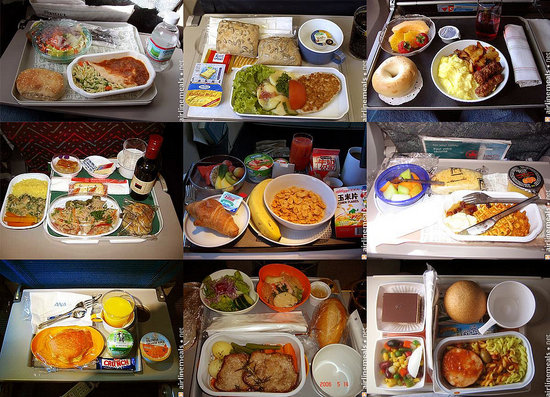By Gary Stoller, USA TODAY
Healthy airline food may seem like a contradiction, but it is possible to eat nutritiously at 35,000 feet, says self-described diet detective Charles Stuart Platkin.
“Many airlines are awakening and seeing that people want healthy food choices,” says Platkin, an assistant professor at CUNY School of Public Health at Hunter College in New York who has assessed airline food’s nutritional value in five annual surveys as editor of DietDetective.com.
In his latest this year, he ranks United Airlines No. 1 for healthy food, followed by JetBlue Airways and American Airlines.
For this year’s survey, Platkin contacted eight U.S. airlines, analyzed their menus for coach passengers on domestic flights and gave each airline a health score on a one- to five-star scale — with one star representing the lowest score and five stars the highest. The score was based on variety of food served, number of healthy offerings, number of fruit and vegetable offerings, an airline’s cooperation in providing nutritional information and nutritional improvement of food offerings since last year’s survey.
United was awarded four stars and applauded by Platkin for its tapas snack box, which includes such fare as marinated olives, hummus and almonds. He also thinks highly of United’s Lite snack box, which has only 430 calories and includes lemon-pepper tuna, pita chips, unsweetened apple sauce and a chocolate pretzel.
For flights longer than three hours, a turkey sandwich with sundried-tomato aioli and potato chips contains 600 calories and is a wise nutritional choice, Platkin says.
The nutritional expert awarded JetBlue 3¼ stars.
“Finally, JetBlue is offering something more than snacks on longer flights, although they still need to add some healthier meals and snack options,” Platkin says.
The most health-conscious JetBlue fliers should choose the airline’s Shape Up meal box, he says. The box includes sun-dried tomato hummus, pita chips, almonds, raisins and pear crisps.
American was awarded 31/8 stars. Its best nutritional choice is a cheese and cracker snack tray, which has 430 calories, Platkin says. On long flights, a Boston Market chicken Caesar salad with chips is a relatively nutritious meal, he says.
Platkin gave Delta Air Lines three stars. Its individual snacks, which include candy and potato chips, are not nutritious, but its breakfast snack is a good option, he says. The snack includes light yogurt, a granola bar and a banana.
US Airways received the lowest score — 1¾ stars. The airline offers “poor overall food choices” and not much variety, Platkin says. US Airways’ breakfast box — which includes cinnamon French toast, fruit salad, smoked turkey breast and other items — is very high in calories (705) and “offers little in terms of nutrition,” he says.
US Airways Vice President James Olson says the airline offers “a mix of tasty and healthy choices,” including fruit, cheese and yogurt.
US Airways strives to offer passengers “a variety of food and beverage options,” but “it is especially challenging for airlines” to provide fresh, perishable foods, “given the onboard storage limitations and other logistical considerations,” Olson says.Platkin says it’s important for airlines to provide nutritional information, because it shows how much they care about their passengers and public health. And some airlines are better than others at making it available.
Virgin America disputes Platkin’s findings. Virgin America offers healthy meals and snacks on all flights, and travel publications and frequent-flier surveys “consistently” give high marks to the airline’s menus, says spokeswoman Abby Lunardini.Delta is considering providing nutrition information to its fliers next year because people are “becoming more and more interested in understanding their food choices,” Delta spokesman Chris Kelly says.

